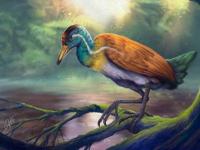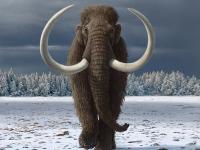Dinosaur Fossils Could Reveal ‘Ancient Solutions To Modern Flight Problems’

Engineers often look to insects and birds when tackling new aerospace challenges such as drone stability. Until now, they have largely ignored another key group with potential solutions, claims researcher Liz Martin-Silverstone – dinosaurs.
Despite the aeronautic excellence of animals such as the Pterosaur, the largest ever flying creature, dinosaurs have mostly been overlooked in the pursuit of bio-inspired technologies, said the University of Bristol palaeontologist.
The researcher and her colleagues claim dinosaurs could provide “ancient solutions to modern flight problems”, such as aerial stability and drone launches.
“There's a lot of really cool stuff in the fossil record that goes unexplored because engineers generally don't look to palaeontology when thinking about inspiration for flight,” said first author Martin-Silverstone. “If we're only looking at modern animals for inspiration, we're really missing a large degree of the morphology out there and ignoring a lot of options that I think could be useful.”
With living and photographed specimens of insects and birds available, engineers might not think to examine fossils, which are often incomplete. However, Martin-Silverstone said there are a few Pterosaur fossils that provide extraordinarily deep insight into the anatomy of their wings, which is essential for understanding their flight capabilities.
“There are two or three absolutely amazingly-preserved Pterosaur fossils that let you see the different layers within the wing membrane, giving us insight into its fibrous components. Also, some fossils are preserved enough to show the wing attachments beneath the hip,” she said. “While you don't know exactly the shape of the wing, by knowing the membrane attachments you can model the effectiveness of different wing shapes and determine which would have performed best in natural conditions.”
Analysing the morphology and predicted flight mechanics of these ancient creatures has revealed novel tactics that don't exist in modern flyers.
Becoming airborne is one example. Launching into the air through a leap or jump, also known as ballistic launch, is standard throughout the animal kingdom. However, larger birds require a running start to gain enough momentum for lift-off. Pterosaurs, on the other hand, may have developed a method to launch from a stationary position, despite some specimens weighing nearly 300kg.
One hypothesis, proposed by review co-author Mike Habib from the Dinosaur Institute at the Natural History Museum of Los Angeles County, suggests that the wing membrane and the robust muscle attachments in the wings allowed Pterosaurs to generate a high-powered leap off their elbows and wrists, giving them enough height to become airborne.
“Today, something like a drone requires a flat surface to launch and is quite restricted on how it actually gets into the air. The unique launch physiology of Pterosaurs might be able to help solve some of these problems,” said Martin-Silverstone.
Pterosaurs can also provide insights on how to prevent flight instability once in the air. Contrary to how sails can become unstable in a strong wind, Pterosaurs evolved strategies to resist flutter of their broad wings over their 160m-year existence. “So far we've struggled to design things like flight suits that can resist the pressures of flight. If we can understand how Pterosaurs did it, for instance by understanding how their wing membrane was actually structured, then that's something we can use to answer modern engineering questions,” the researcher said.
The unique physiological elements aren't limited to Pterosaurs. Other ancient flyers, like Microraptors, had feathered wings on both their arms and legs, while newly-discovered dinosaur Yi qi had wings that combine feathers with a bat-like membrane – something that has never been repeated since their extinction. The authors say many flight strategies remain to be properly explored.
We will have a much better chance of overcoming the hurdles still hindering man-made flight if we combine our knowledge from both living and extinct flying animals, said Martin-Silverstone. “We want biologists and engineers alike to reach out to palaeontologists when they are looking to solving flight problems, as there might be something extinct that could help. If we limit ourselves to looking at the modern animals, then we're missing out on a lot of diversity that might be useful."
The review was published in Trends in Ecology and Evolution.
Source: www.imeche.org/








